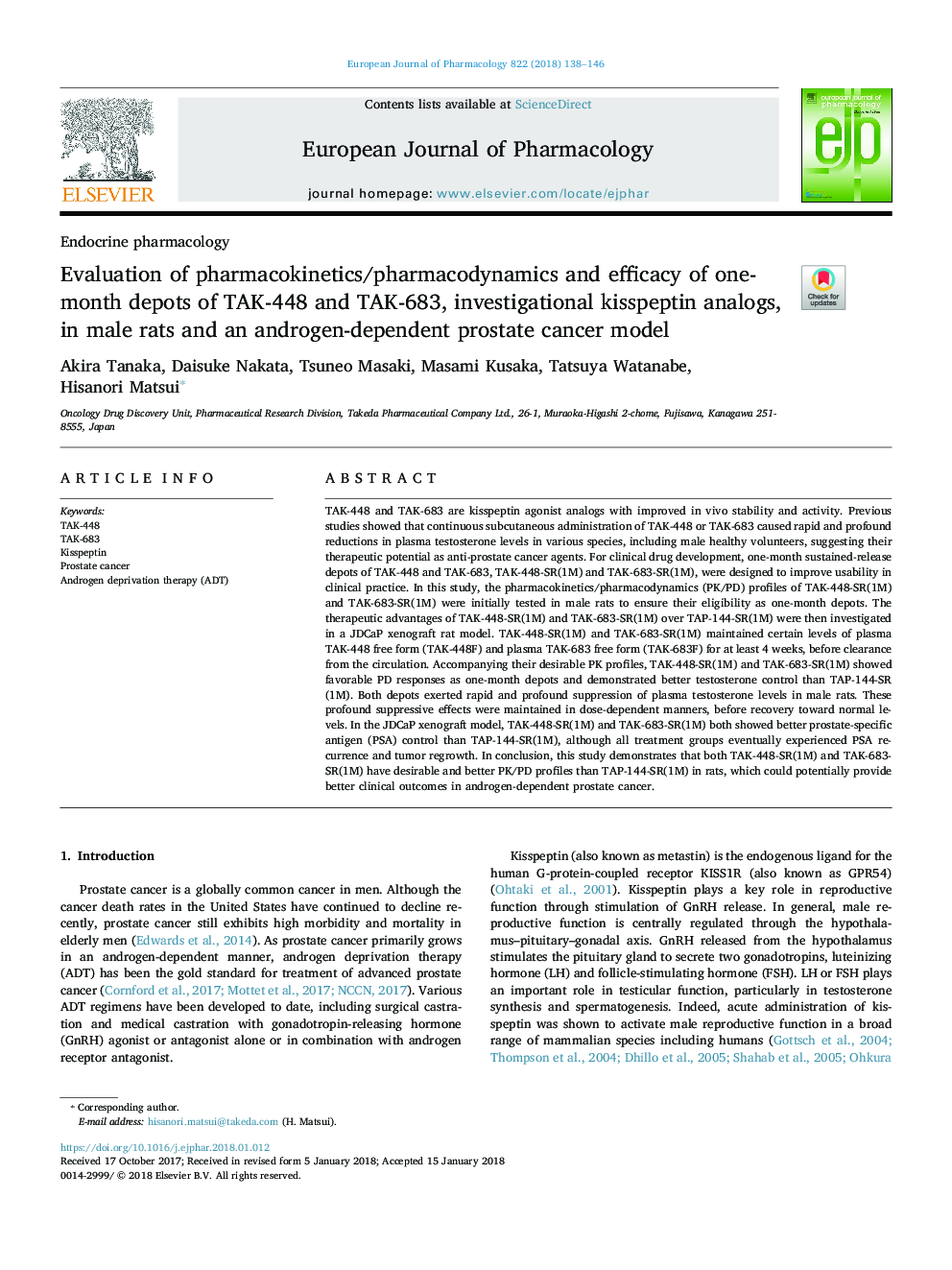| Article ID | Journal | Published Year | Pages | File Type |
|---|---|---|---|---|
| 8529417 | European Journal of Pharmacology | 2018 | 9 Pages |
Abstract
TAK-448 and TAK-683 are kisspeptin agonist analogs with improved in vivo stability and activity. Previous studies showed that continuous subcutaneous administration of TAK-448 or TAK-683 caused rapid and profound reductions in plasma testosterone levels in various species, including male healthy volunteers, suggesting their therapeutic potential as anti-prostate cancer agents. For clinical drug development, one-month sustained-release depots of TAK-448 and TAK-683, TAK-448-SR(1M) and TAK-683-SR(1M), were designed to improve usability in clinical practice. In this study, the pharmacokinetics/pharmacodynamics (PK/PD) profiles of TAK-448-SR(1M) and TAK-683-SR(1M) were initially tested in male rats to ensure their eligibility as one-month depots. The therapeutic advantages of TAK-448-SR(1M) and TAK-683-SR(1M) over TAP-144-SR(1M) were then investigated in a JDCaP xenograft rat model. TAK-448-SR(1M) and TAK-683-SR(1M) maintained certain levels of plasma TAK-448 free form (TAK-448F) and plasma TAK-683 free form (TAK-683F) for at least 4 weeks, before clearance from the circulation. Accompanying their desirable PK profiles, TAK-448-SR(1M) and TAK-683-SR(1M) showed favorable PD responses as one-month depots and demonstrated better testosterone control than TAP-144-SR(1M). Both depots exerted rapid and profound suppression of plasma testosterone levels in male rats. These profound suppressive effects were maintained in dose-dependent manners, before recovery toward normal levels. In the JDCaP xenograft model, TAK-448-SR(1M) and TAK-683-SR(1M) both showed better prostate-specific antigen (PSA) control than TAP-144-SR(1M), although all treatment groups eventually experienced PSA recurrence and tumor regrowth. In conclusion, this study demonstrates that both TAK-448-SR(1M) and TAK-683-SR(1M) have desirable and better PK/PD profiles than TAP-144-SR(1M) in rats, which could potentially provide better clinical outcomes in androgen-dependent prostate cancer.
Related Topics
Life Sciences
Neuroscience
Cellular and Molecular Neuroscience
Authors
Akira Tanaka, Daisuke Nakata, Tsuneo Masaki, Masami Kusaka, Tatsuya Watanabe, Hisanori Matsui,
